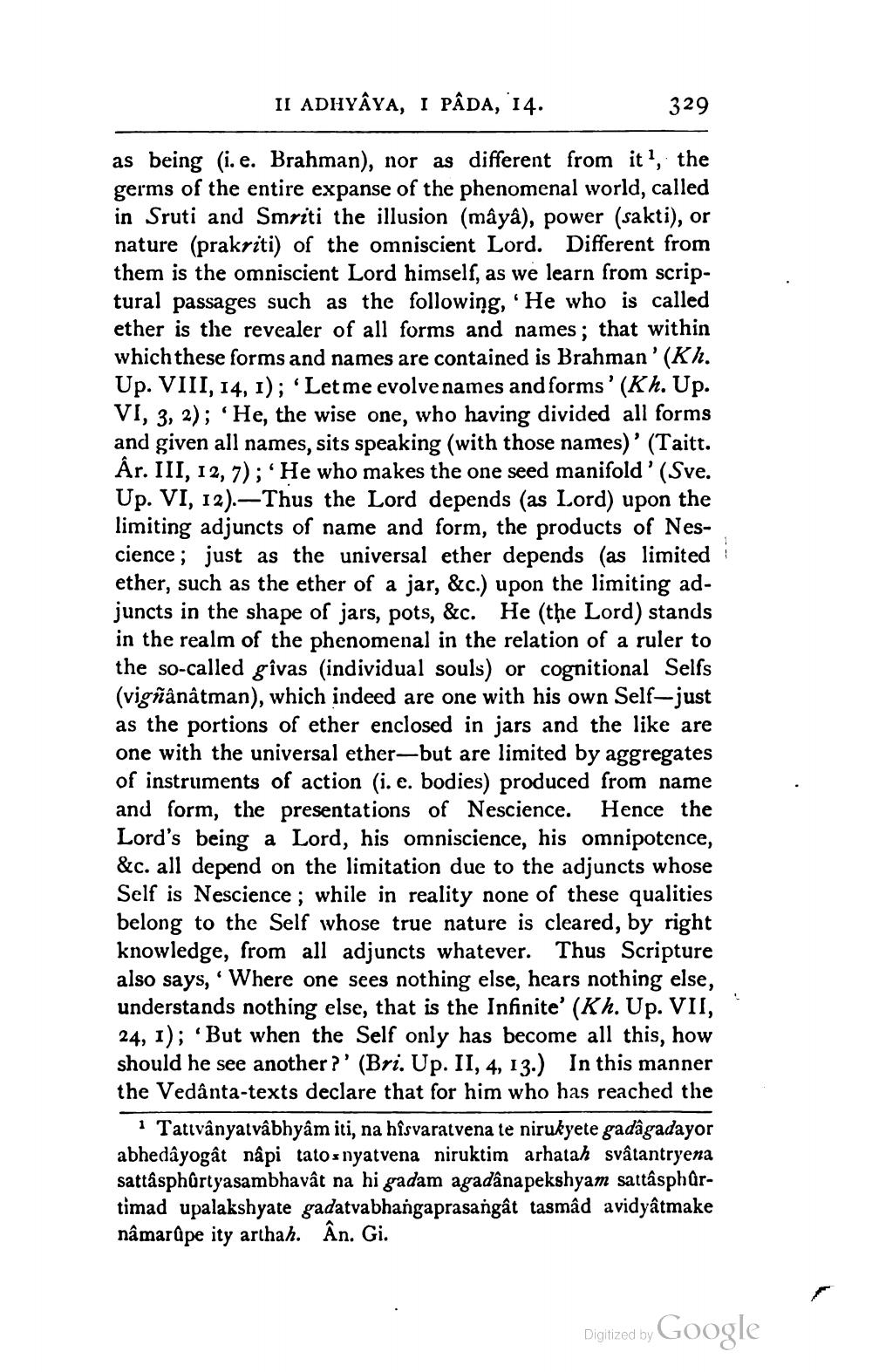________________
II ADHYAYA, I PÂDA, 14.
329
as being (i.e. Brahman), nor as different from it, the germs of the entire expanse of the phenomenal world, called in Sruti and Smriti the illusion (mâyâ), power (sakti), or nature (prakriti) of the omniscient Lord. Different from them is the omniscient Lord himself, as we learn from scriptural passages such as the following, 'He who is called ether is the revealer of all forms and names; that within which these forms and names are contained is Brahman' (Kh. Up. VIII, 14, 1); 'Let me evolve names and forms' (Kh. Up. VI, 3, 2); 'He, the wise one, who having divided all forms and given all names, sits speaking (with those names)' (Taitt. Âr. III, 12, 7); “He who makes the one seed manifold' (Sve. Up. VI, 12).—Thus the Lord depends (as Lord) upon the limiting adjuncts of name and form, the products of Nescience; just as the universal ether depends (as limited ether, such as the ether of a jar, &c.) upon the limiting adjuncts in the shape of jars, pots, &c. He (the Lord) stands in the realm of the phenomenal in the relation of a ruler to the so-called givas (individual souls) or cognitional Selfs (vigñânâtman), which indeed are one with his own Self-just as the portions of ether enclosed in jars and the like are one with the universal ether—but are limited by aggregates of instruments of action (.e. bodies) produced from name and form, the presentations of Nescience. Hence the Lord's being a Lord, his omniscience, his omnipotence, &c. all depend on the limitation due to the adjuncts whose Self is Nescience ; while in reality none of these qualities belong to the Self whose true nature is cleared, by right knowledge, from all adjuncts whatever. Thus Scripture also says, 'Where one sees nothing else, hears nothing else, understands nothing else, that is the Infinite' (Kh. Up. VII, 24, 1); But when the Self only has become all this, how should he see another ?' (Bri. Up. II, 4, 13.) In this manner the Vedanta-texts declare that for him who has reached the
1 Tativânyatvâbhyâm iti, na hîsvaratvena te nirukyete gadâgadayor abhedâyogật nâpi tato s nyatvena niruktim arhatah svâtantryena sattasphârtyasambhavât na hi gadam agadâna pekshyam sattâsphûrtimad upalakshyate gadatvabhangaprasangat tasmâd avidyâtmake nâmarûpe ity arthah. Ân. Gi.
Digitized by Google




